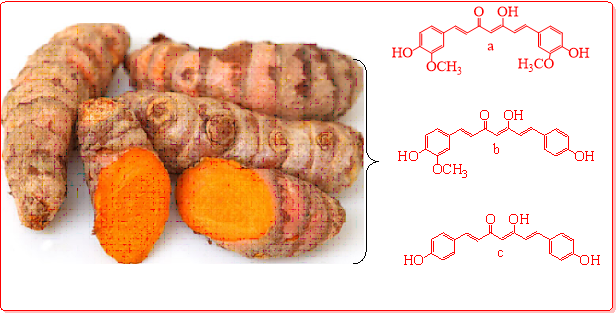Biography
Interests
Dr. Mahmood Ahmed
Institute of Chemistry, University of the Punjab, 54590, Lahore, Pakistan
*Correspondence to: Dr. Mahmood Ahmed, Institute of Chemistry, University of the Punjab, 54590, Lahore, Pakistan.
Copyright © 2018 Dr. Mahmood Ahmed. This is an open access article distributed under the Creative Commons Attribution License, which permits unrestricted use, distribution, and reproduction in any medium, provided the original work is properly cited.

Curcumin is a phenolic compound that is considered as bioactive component of turmeric (curcuma longa L.) and the yellow color of turmeric is by virtue of curcumin. Among the other phytoconstituents, curcuminoids mixture makes 1-6% of turmeric by weight. Among the curcuminoids extract, curcumin (a) makes up 60-70% by weight while demethoxy curcumin (b) and bisdemethoxy curcumin (c) constitutes 20-27% and 10-15% respectively as minor components.
Over the few decades’ therapeutic potential of curcumin has been revelead, different studies have explained its efficacy against various types of cancers such as chemo resistant colon cancer cells, esophageal cancers, thyroid carcinomas, skin cancer and a potent anti-inflammatory agent. Curcumin regulates the various growth factors, protein kinases, inflammatory cytokines and transcription factors to suppress the metastasis, proliferation of human tumors.
Other than anticancer and antitumor activities, it has also shown its effects against the variety of diseases like respiratory tract infection, hepatic steatosis, skin photoageing, Parkinson’s disease, pathogenesis of obesity, diabetes, HIV-associated diarrhea and Alzheimer disease by inhibition of amyloid beta oligomer formation. It also has activity for the indications like antifungal, antibacterial, wound healing, antispasmodic, antiparasitic, antifibrinogenic and lipid lowering. The structure-activity relationship studies of curcumin molecule against different biological targets have indicated that the presence of two phenyl rings with a C-7 linker with keto-enol function (C=O groups as hydrogen acceptors and C-4 as hydrogen donor) are fundamentally important for its biological activities. However, unsaturation in the linker (conformational flexibility) is important for its antitumor/anticancer activity but not for redox regulatory or apoptotic activities. No toxicity has been reported in animals and humans even at higher concentration of 8g/day administered to human subject’s results in an average peak serum concentration of ≈ 1.77μM of curcumin.

Hi!
We're here to answer your questions!
Send us a message via Whatsapp, and we'll reply the moment we're available!